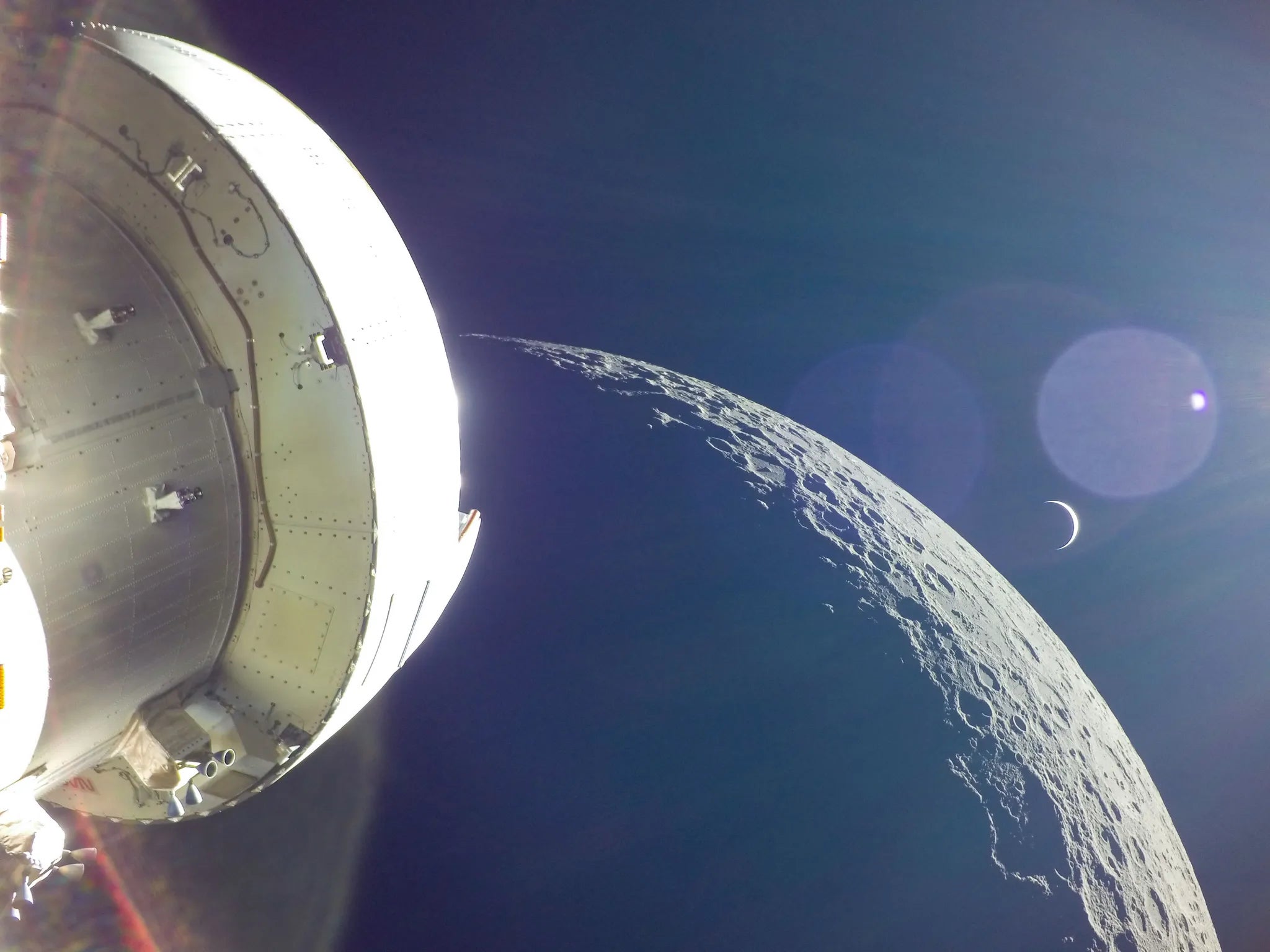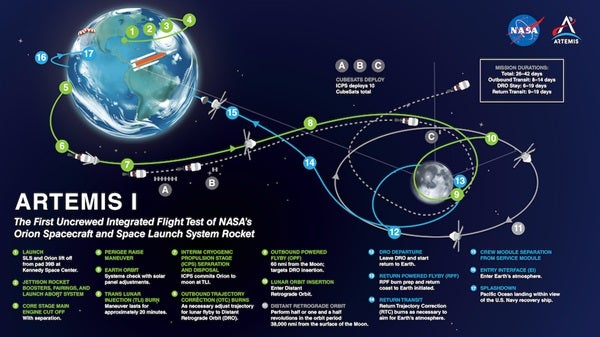
NASA’s next giant leap took a step back on Tuesday, January 9, as the agency announced long-anticipated delays to the launches of its next two Artemis flights.
Originally scheduled for November 2024, the Artemis 2 lunar flyby will now launch in September 2025. And originally slated for December 2025, the Artemis 3 Moon landing is now aiming for September 2026. Artemis 4, which will begin building the Moon-orbiting Gateway, is still aiming for September 2028, with no delay anticipated.
“How we go is just as important as what we do. Safety is our top priority. We are going to give more time on Artemis 2 and 3,” said NASA Administrator Bill Nelson at a press conference. NASA Associate Administrator Jim Free added, “We will launch when we are ready.”
The causes for the delays are several, Free indicated, from spacesuit development to SpaceX getting its Starship to orbit and tested out before using it to transfer fuel in orbit for a crewed Moon mission to actually land humans on the Moon.
Amit Kshatriya, Deputy Associate Administrator for NASA’s Moon to Mars Program, provided more detailed explanations.
The Artemis 1 test flight in late 2022 revealed unexpected “liberation” of small bits of char from the heat shield during reentry. The shield’s performance “was met with extreme precision”— a crew would have been safe—but because models did not show the ablation patterns that actually occurred, NASA and its contractors are hoping to understand how the models and reality mismatched. They expect an answer this spring.
Because hardware development and manufacture for the forthcoming Artemis missions are happening simultaneously rather than sequentially, NASA is also identifying problems in the Orion craft for Artemis 3. There, Kshatriya said, a design flaw in a circuit for life support — including CO2 scrubbing—was “unacceptable.” The circuit controls motor valves have to be replaced, requiring access that will “take quite a bit of time. Every connector that we touch will have to tested after we are done. We know how to fix it.” The abort system also has displayed some deficiencies in battery performance.
The mission’s rocket development and mobile launcher are further along. The ESA service modules for future missions are delivered or will be. But additional challenges include building out rapid fueling facilities at Kennedy Space Center and a new docking mechanism for the Artemis 3 Orion capsule.
Related: A list of current and upcoming missions to space
“The coordination and choreography . . . is a significant coordination challenge,” said Kshatriya, emphasizing NASA’s “extensive integration across the systems.”
The new landing date “is still very aggressive,” he added. That seems to be the case because Starship has yet to reach orbit. SpaceX says it will launch again next month. The company currently expects that it needs some 10 flights to master the fuel-transfer in orbit that would get a Starship to the Moon. And an uncrewed Starship needs to land on the Moon next year before Artemis 3.

Down the road, Artemis 4 will deliver equipment to begin construction of the planned lunar orbital Gateway station, for which the United Arab Emirates just announced they will provide an airlock. Artemis 5 is set as another landing, this time with the as-yet-unbuilt Blue Moon lander from Blue Origin.
NASA is now also asking for cargo versions of both lunar landers.
The Artemis 2 crew consists of Reid Wiseman, Victor Glover, Christina Koch and Canadian Space Agency astronaut Jeremy Hansen. Their recent planned 15-minute Oval Office went for 90 minutes, and when they were introduced at the NCAA football championship game, “The place went nuts,” said Nelson.
NASA continues to need such good vibes to keep alive political and public enthusiasm for Artemis.









